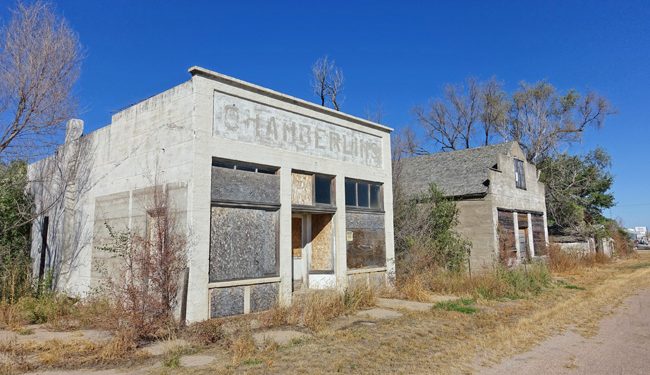Nebraska, often celebrated for its vast plains, rich agricultural heritage, and vibrant cities, harbors secrets that the passage of time has almost forgotten. Among these secrets lies an abandoned town that holds tales of bygone eras, economic shifts, and human resilience. This article delves deep into the story of Monowi, Nebraska – an abandoned town that most people don’t know about. With a population of one, Monowi stands as a testament to the enduring spirit of its lone resident and the fascinating history that shaped its current state.
The Rise of Monowi: A Brief History
This Article Includes
- 1 The Rise of Monowi: A Brief History
- 2 Related posts
- 3 Officials: Building Is Unsafe To Occupy After The Floor Collapsed During The Maryland Fire
- 4 Tattooed Shooter Involved In Tag-team Assault For Shooting Victim In The Face In Jackson: Prosecutor
- 5 The Decline of Monowi
- 6 The Last Resident: Elsie Eiler
- 7 The Cultural and Historical Significance of Monowi
- 8 The Role of Monowi in Modern Society
- 9 The Future of Monowi
- 10 Conclusion
Early Settlement
Monowi was founded in the early 1900s, during a period when the Great Plains were being settled rapidly. The town’s name is derived from the Native American word for “flower,” indicative of the area’s natural beauty. Initially, Monowi thrived as a small farming community, with its residents primarily engaged in agriculture and livestock.
Population Boom
In the 1930s, Monowi reached its peak population of around 150 residents. The town boasted several businesses, including a grocery store, a tavern, a post office, and even a school. The Chicago & North Western Railway played a crucial role in the town’s development, providing essential transportation links for goods and people.
The Decline of Monowi
Economic Shifts
The mid-20th century brought significant changes to the American agricultural landscape. Advances in farming technology and the consolidation of smaller farms into larger agribusinesses led to a decline in rural populations. Monowi was not immune to these trends. As younger generations moved to urban areas seeking better opportunities, the town’s population began to dwindle.
The Closure of the Railway
One of the pivotal moments in Monowi’s decline was the closure of the Chicago & North Western Railway line that ran through the town. This event marked the end of an era, severing the vital transportation link that had sustained Monowi’s economy. Businesses closed, and the town’s infrastructure began to deteriorate.
The Last Resident: Elsie Eiler
A Remarkable Story
Today, Monowi is famously known as the town with a population of one – Elsie Eiler. Born and raised in Monowi, Elsie has become an emblem of resilience and dedication to preserving the town’s legacy. After her husband Rudy passed away in 2004, Elsie became the sole resident, taking on the roles of mayor, bartender, and librarian.
Daily Life in Monowi
Despite the solitude, Elsie maintains the Monowi Tavern, which serves as a gathering place for visitors and tourists intrigued by the town’s unique status. She also operates the Monowi Library, a tribute to her late husband, which houses over 5,000 books. Elsie’s life in Monowi is a blend of routine and the extraordinary, as she continues to keep the town alive single-handedly.
The Cultural and Historical Significance of Monowi
A Snapshot of Rural America
Monowi offers a rare glimpse into the past, showcasing the impact of economic and social changes on small rural communities. The town stands as a poignant reminder of the thousands of similar communities that once dotted the American landscape but have since vanished or drastically changed.
Preservation Efforts
Elsie’s dedication to preserving Monowi’s history has garnered attention from across the country. Visitors come to experience a piece of living history and to support Elsie’s efforts. The town has become a symbol of the importance of preserving cultural heritage, even in the face of overwhelming odds.
The Role of Monowi in Modern Society
Tourism and Media Attention
Monowi’s unique status has attracted significant media attention over the years, with numerous articles, documentaries, and news stories highlighting Elsie’s life and the town’s history. This attention has turned Monowi into a modest tourist attraction, bringing visitors from all over the world to witness the town with a population of one.
Educational Value
Monowi serves as a valuable educational resource, providing insights into rural depopulation, economic transitions, and the personal stories behind demographic statistics. Schools, universities, and researchers often reference Monowi as a case study in discussions about rural America and community resilience.
The Future of Monowi
Challenges and Opportunities
As Elsie Eiler ages, questions about the future of Monowi naturally arise. The town’s fate is uncertain, but its story will likely continue to inspire and educate future generations. Efforts to preserve the town’s history, possibly through partnerships with historical societies or museums, could ensure that Monowi’s legacy endures.
Potential for Revitalization
While the revival of Monowi as a bustling community is unlikely, there are possibilities for it to remain a point of interest. The increasing popularity of heritage tourism and the growing appreciation for historical narratives may bring new opportunities for preserving and sharing Monowi’s story with a broader audience.
Conclusion
Monowi, Nebraska, stands as a unique testament to the passage of time and the enduring spirit of its sole resident, Elsie Eiler. From its early days as a thriving farming community to its current status as the town with a population of one, Monowi encapsulates the broader trends of rural depopulation and economic change. Yet, it also highlights the importance of individual dedication and the power of storytelling in preserving cultural heritage. As we reflect on Monowi’s past and consider its future, we are reminded of the many small towns that have shaped, and continue to shape, the American experience.










